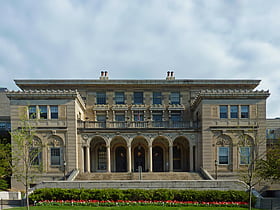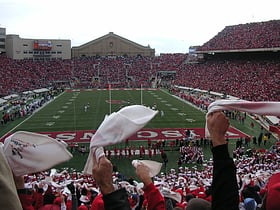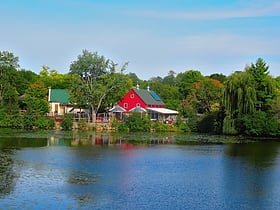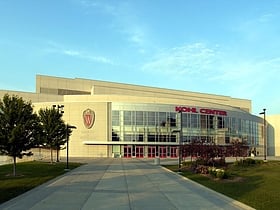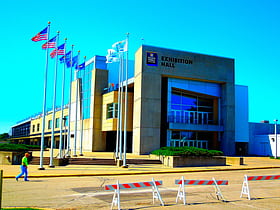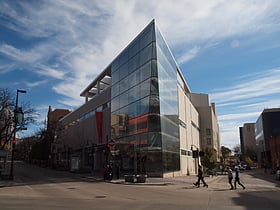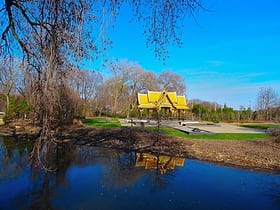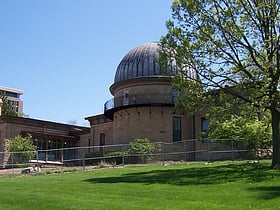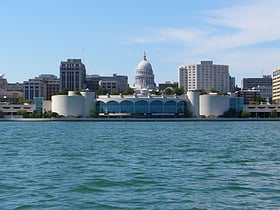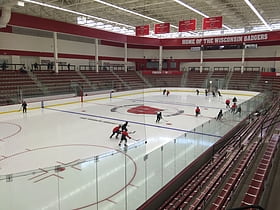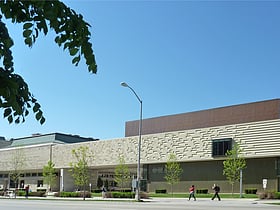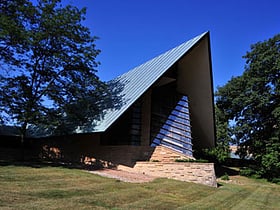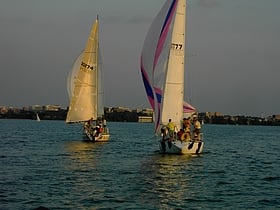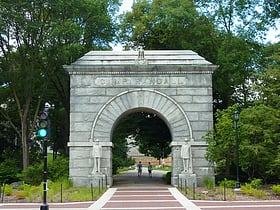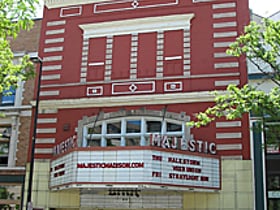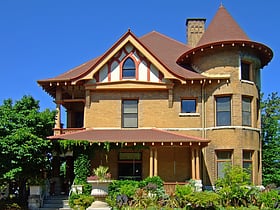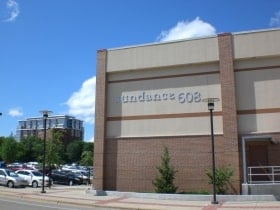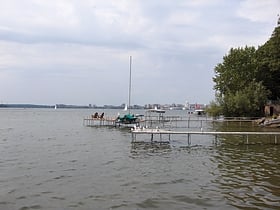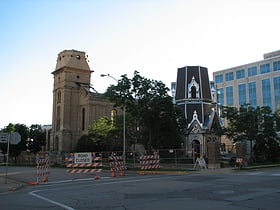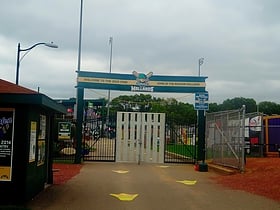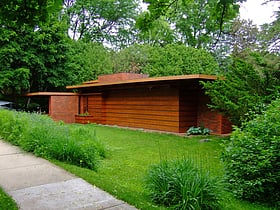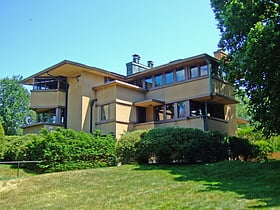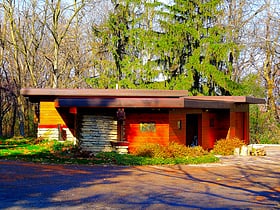Madison: Palladian Architecture
Places and attractions in the Palladian architecture category
Categories
- Palladian architecture
- Museum
- Park
- Theater
- Concerts and shows
- Church
- History museum
- Shopping
- Sport
- Sport venue
- Arenas and stadiums
- Cinema
- Music venue
- Nightlife
- Neighbourhood
- Frank Lloyd Wright
- Gothic Revival architecture
- Library
Wisconsin State Capitol
The Wisconsin State Capitol, a majestic building in Madison, Wisconsin, stands as a beacon of democracy and history. Erected on an isthmus between Lake Monona and Lake Mendota, this grand structure serves as both a working government facility and a cultural monument.
Memorial Union Terrace
The Memorial Union Terrace, nestled on the shores of Lake Mendota in Madison, Wisconsin, is an iconic gathering spot renowned for its scenic views, vibrant atmosphere, and rich history. This lakeside terrace is part of the University of Wisconsin-Madison's Memorial...
Camp Randall Stadium
Camp Randall Stadium is an outdoor stadium in Madison, Wisconsin, located on the campus of the University of Wisconsin. It has been the home of the Wisconsin Badgers football team in rudimentary form since 1895, and as a fully functioning stadium since 1917.
Henry Vilas Zoo
Free destination with global wildlife Henry Vilas Zoo is a 28-acre public zoo in Madison, Wisconsin, United States, that is accredited by the Association of Zoos and Aquariums. Owned by Dane County, the zoo charges no admission or parking fees. It receives over 750,000 visitors annually.
Kohl Center
The Kohl Center is an arena and athletic center at the University of Wisconsin–Madison, United States. The building, which opened in 1998, is the home of the university's men's basketball and ice hockey teams, and the women's basketball team.
Alliant Energy Center
Alliant Energy Center is a multi-building complex located in unincorporated Madison, Wisconsin. It comprises 164 acres of greenspace and includes the 255,000-square-foot Exhibition Hall, the 10,000-seat Veterans Memorial Coliseum, the 29-acre Willow Island and the 22,000-square-foot Arena.
Madison Museum of Contemporary Art
The Madison Museum of Contemporary Art, formerly known as the Madison Art Center, is an independent, non-profit art museum located in downtown Madison, Wisconsin. MMoCA is dedicated to exhibiting, collecting, and preserving modern and contemporary art.
Olbrich Botanical Gardens
Olbrich Botanical Gardens is a 16 acre outdoor botanical garden and 10,000-square-foot conservatory in Madison, Wisconsin. Founded in 1952 and named for its founder, Michael Olbrich, the gardens are owned and operated jointly by the City of Madison Parks and the non-profit Olbrich Botanical Society.
Washburn Observatory
The Washburn Observatory is an astronomical observatory located at 1401 Observatory Drive on the University of Wisconsin–Madison campus in Madison, Wisconsin, United States. Completed in 1881, it was a major research facility for about 50 years.
Monona Terrace
Monona Terrace is a convention center on the shores of Lake Monona in Madison, Wisconsin.
LaBahn Arena
LaBahn Arena is the home ice of the Wisconsin Badgers women's ice hockey team. It was the second arena to be purpose-built for a women's collegiate hockey team; the first was Minnesota's Ridder Arena.
Chazen Museum of Art
The Chazen Museum of Art is an art museum located at the University of Wisconsin–Madison in Madison, Wisconsin. The Chazen Museum of Art is accredited by the American Alliance of Museums.
First Unitarian Society of Madison
The First Unitarian Society of Madison is a Unitarian Universalist congregation in Shorewood Hills, Wisconsin. Its meeting house was designed by Frank Lloyd Wright and built by Marshall Erdman in 1949–1951, and has been designated a U.S. National Historic Landmark for its architecture.
Lake Mendota
Lake Mendota is a freshwater eutrophic lake that is the northernmost and largest of the four lakes in Madison, Wisconsin. The lake borders Madison on the north, east, and south, Middleton on the west, Shorewood Hills on the southwest, Maple Bluff on the northeast, and Westport on the northwest.
Gates of Heaven Synagogue
Shaarei Shamayim has been the name of two Jewish congregations in Madison, Wisconsin. The first, dating to the 19th century but no longer in existence, built what is now the eighth-oldest synagogue building still standing in the United States.
Camp Randall
Camp Randall was a United States Army base in Madison, Wisconsin, the largest staging point for Wisconsin troops entering the American Civil War. At this camp fresh volunteers received quick training before heading off to join the Union Army.
Majestic Theatre
The Majestic Theatre is a 600-capacity live music venue in downtown Madison, Wisconsin. Opened in 1906, it is Madison's oldest theater, changing ownership many times and adapting to the many changes in the entertainment business throughout its history.
Allen Centennial Gardens
The Allen Centennial Garden is a free public garden on the grounds of the University of Wisconsin–Madison. The grounds feature the Agricultural Dean's House, a brick Queen Anne-style home built in 1896, and the home of the first four deans of the College of Agricultural and Life Sciences.
University of Wisconsin–Madison Arboretum
The University of Wisconsin–Madison Arboretum is a teaching and research facility of the University of Wisconsin–Madison and the site of historic research in ecological restoration.
AMC Dine-In Madison 6
In 1969, Robert Redford purchased 6,000 acres at the base of 12,000-foot Mount Timpanogos in Utah's Wasatch Mountains. He named this land Sundance. The Sundance Group is a listing of all the businesses that run under the Sundance corporate umbrella started by and run by actor Robert Redford.
Lake Monona
Recreational lake for swimming and boating Lake Monona is a freshwater drainage lake in Dane County, Wisconsin, surrounded on three sides by the city of Madison, Wisconsin, and on the south east side by the city of Monona, Wisconsin.
Annie C. Stewart Memorial Fountain
The Annie C. Stewart Memorial Fountain is a fountain in Madison, the capital of the U.S. state of Wisconsin. Dedicated to the memory of Annie C. Stewart, who engaged in charitable activities in Madison, it was constructed in 1917–1925 and erected in Henry Vilas Park in 1925.
Temple Beth El
Temple Beth El, also known as Temple Beth-El, is a Reform synagogue in Madison, Wisconsin, in the United States. The synagogue was founded in 1939.
Saint Raphael's Cathedral
Saint Raphael's Cathedral is the Cathedral and a parish for the Roman Catholic Diocese of Madison and was located in downtown Madison, Wisconsin at 222 West Main Street.
First Church of Christ
The former First Church of Christ Scientist, is an historic Christian Science church building located at 315 Wisconsin Avenue, Madison, Wisconsin, United States. Built in 1929, it was designed in the Classical Revival-style by noted Madison architect Frank M. Riley.
Mansion Hill Historic District
The Mansion Hill Historic District encompasses a part of the Mansion Hill neighborhood of Madison, Wisconsin. The district was home to several members of Madison's upper class during the 19th century.
Bascom Hill
Bascom Hill is the iconic main quadrangle that forms the historic core of the University of Wisconsin–Madison campus. It is located on the opposite end of State Street from the Wisconsin State Capitol, and is named after John Bascom, former president of the University of Wisconsin.
University of Wisconsin Science Hall
University of Wisconsin Science Hall is a building on the campus of the University of Wisconsin–Madison. It is significant for its association with Charles R. Van Hise, "who led the Department of Mineralogy and Geology to national prominence" and then served as president of the university. The building was constructed in 1888.
Warner Park
Warner Park is a community park on the northeast side of Madison, Wisconsin near Lake Mendota. Warner Park is also the home to the Madison Mallards baseball team, a member of the Northwoods League. Its stadium, nicknamed the "Duck Pond", was built in 1982 and has a capacity of 6,750.
Herbert and Katherine Jacobs First House
Herbert and Katherine Jacobs First House, commonly referred to as Jacobs I, is a single family home located at 441 Toepfer Avenue in Madison, Wisconsin, United States.
Eugene A. Gilmore House
The Eugene A. Gilmore House, also known as "Airplane" House, is a Frank Lloyd Wright designed Prairie school home that was constructed in Madison, Wisconsin in 1908. The client, Eugene Allen Gilmore, served as faculty at the nearby University of Wisconsin Law School from 1902 to 1922.
DeLuca Biochemistry Building
The Hector F. DeLuca Biochemistry Building, originally known as the Agricultural Chemistry Building, is a historic structure on the campus of the University of Wisconsin–Madison. It was the site of the discovery of vitamins A and B, as well as the development of vitamin D processing.
Hotel Loraine
Hotel Loraine, also known as The Loraine, is a ten-story high-rise building located in downtown Madison, Wisconsin. Designed in the Beaux-arts style by architect Herbert W.
Harold C. Bradley House
Harold C. Bradley House, also known as Mrs. Josephine Crane Bradley Residence, is a Prairie School home designed by Louis H. Sullivan and George Grant Elmslie. It is located in the University Heights Historic District of Madison, Wisconsin, United States.
Herbert and Katherine Jacobs Second House
Herbert and Katherine Jacobs Second House is a historic house located at 3995 Shawn Trail in Madison, Wisconsin, United States.
University of Wisconsin–Madison
The University of Wisconsin–Madison is a public land-grant research university in Madison, Wisconsin. Founded when Wisconsin achieved statehood in 1848, UW–Madison is the official state university of Wisconsin and the flagship campus of the University of Wisconsin System.
Wisconsin Field House
The Wisconsin Field House is a multi-purpose arena owned by the University of Wisconsin–Madison and located directly south of Camp Randall Stadium.
Robert M. Lamp House
The Robert M. Lamp House is a residence at 22 N. Butler Street in Madison, Wisconsin, designed by Frank Lloyd Wright for "Robie" Lamp, a realtor, insurance agent, and Madison City Treasurer.
University of Wisconsin Armory and Gymnasium
The University of Wisconsin Armory and Gymnasium, also called "the Red Gym", is a building on the campus of University of Wisconsin–Madison. It was originally used as a combination gymnasium and armory beginning in 1894. Designed in the Romanesque revival style, it resembles a red brick castle.
Map


